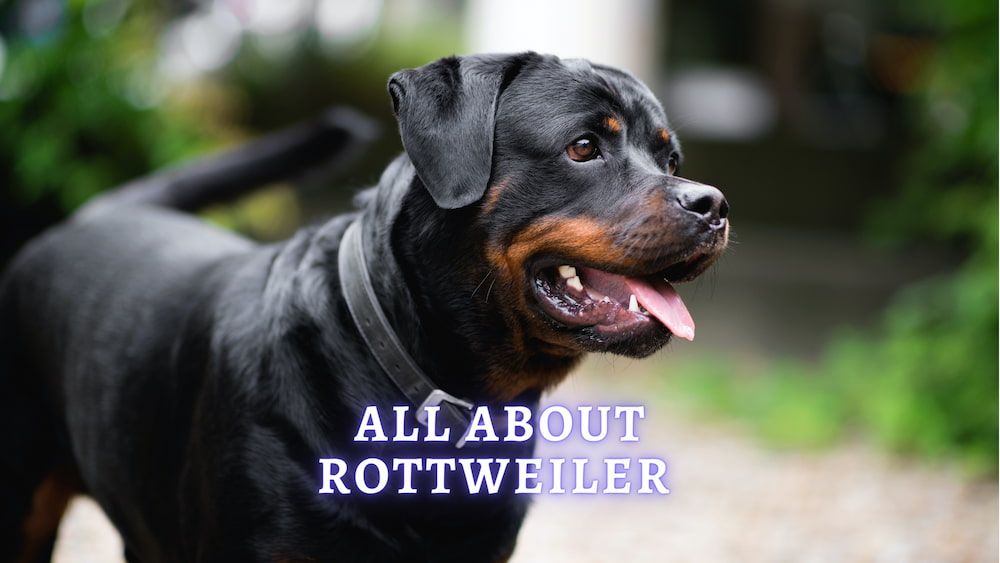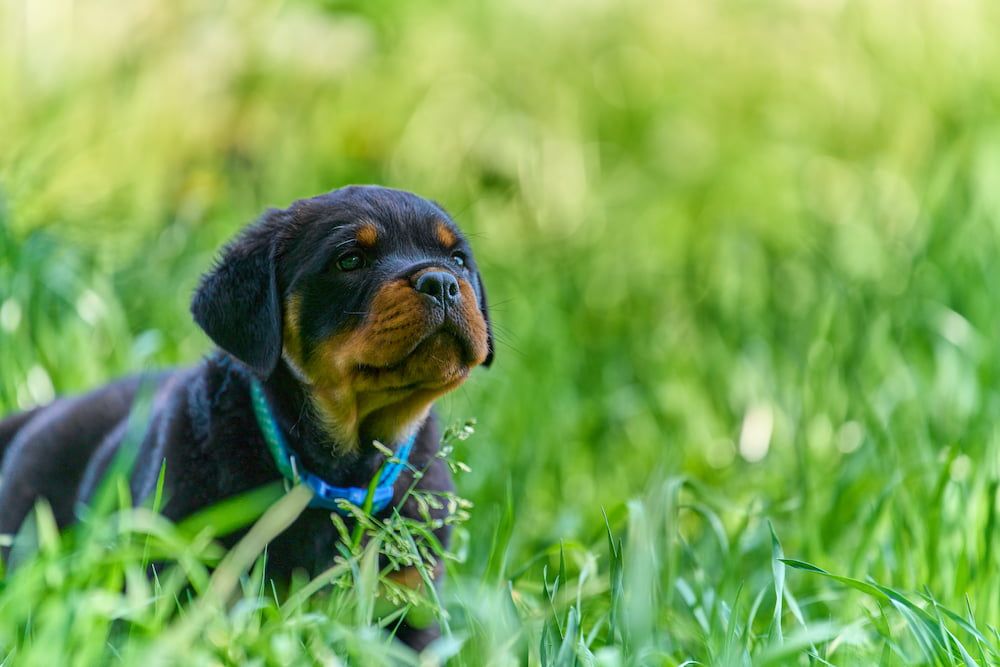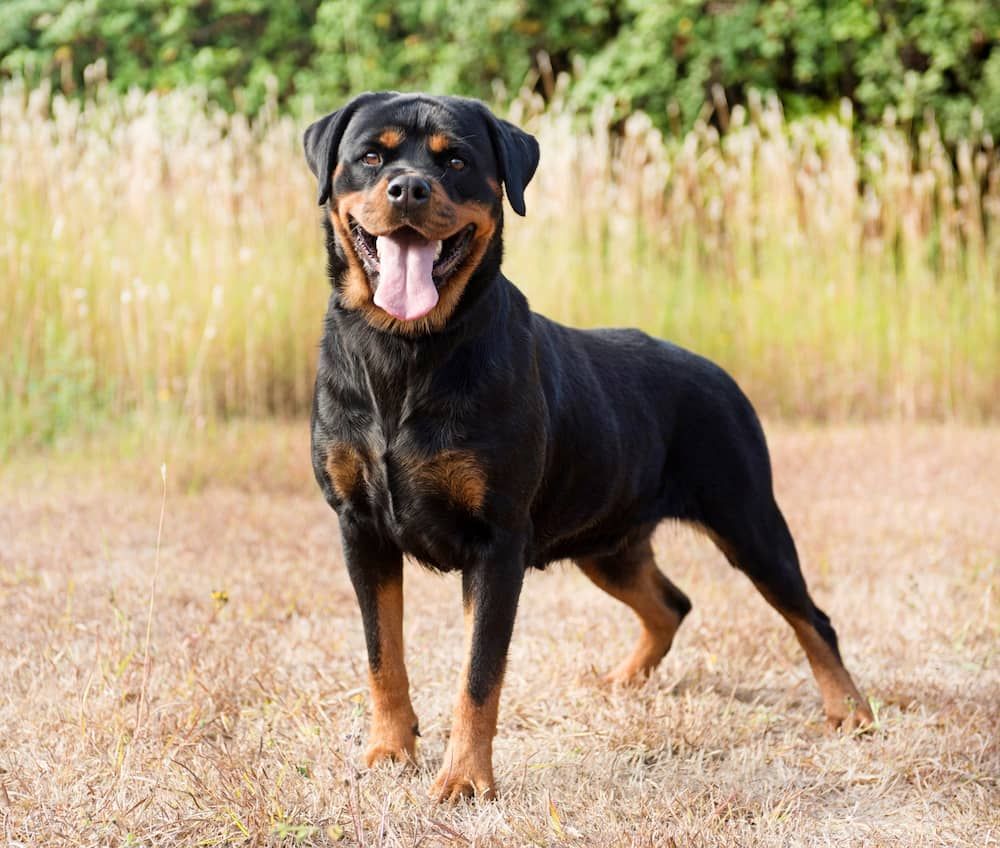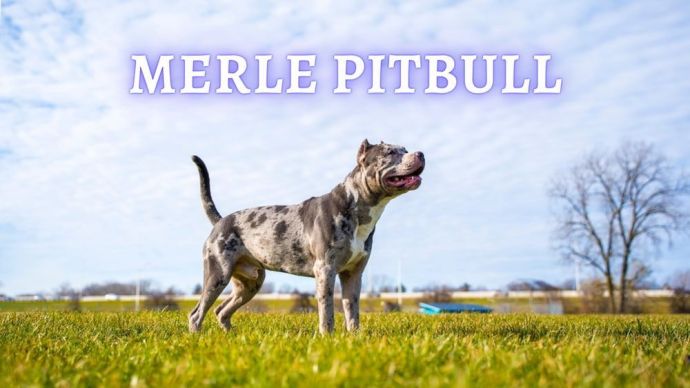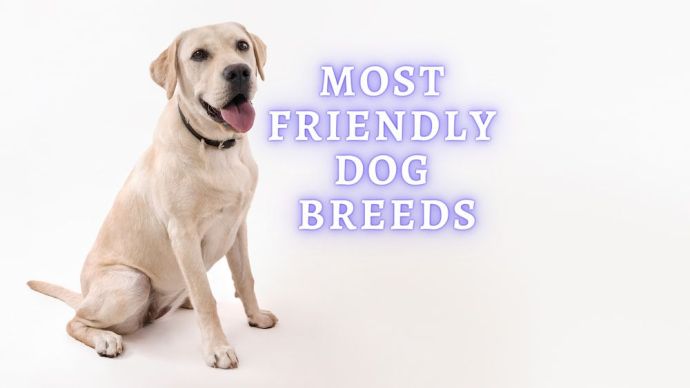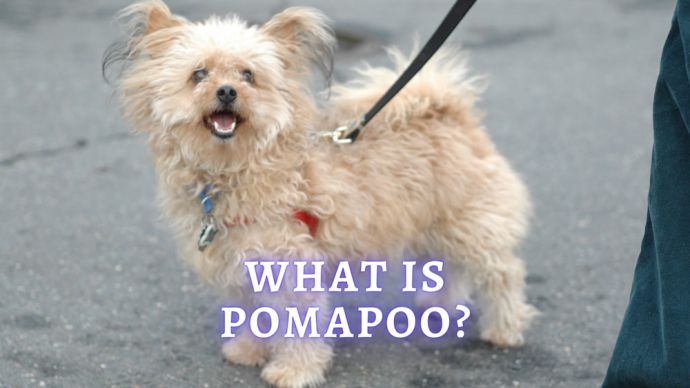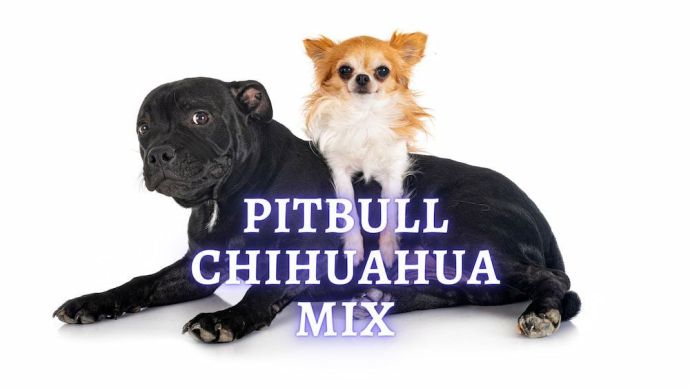Rottweiler: Rottweiler Dog Breed History, Personality and Health Care
Written by:
Author: Vicki Smirnova
Vicki Smirnova is a professional writer and editor who adores animals and helps readers get along well with their pets. She has been working in digital media for more than 5 years and has great experience writing content about lifestyle, including pets. Vicki specializes in dog health and nutrition, cat feeding, dog training. She is an aquarium lover and is passionate to write about fish care at home. Also, Vicki headed several websites and worked as a news editor.
View all 244 articlesLearn about our editorial process and veterinary review board.
Viewed: 149
Updated on: 04/14/2023
Rottweilers are large but compactly built dogs, and their distinctive feature is a solid black coat with pronounced rust-colored markings. For their size, they are strong, powerful, and flexible dogs that can run and jump with ease.
| Weight | 80-135 pounds |
| Height | 22-27 inches |
| Colors and Patterns | brown/chocolate/liver black |
| Lifespan | 9-10 years |
| Suitable for | guard family dog |
History of the Rottweiler
The Rottweiler dog breed is considered German and appeared on its territory centuries earlier when, on the site of modern German cities, there were only settlements of semi-wild Germanic tribes. The Roman Empire, expanding its borders, seized new territories, and the lands beyond the Rhine were of great value, as were the people who inhabited them.
During advancing troops, the Romans had fighting dogs that mated with local dogs. The same thing happened in Germany. Rottweilers are descended from German shepherds crossed with other shepherd dogs and mastiffs. When, in the Middle Ages, during the time of the new holy Roman Empire, the inhabitants of one of the Germanic settlements decided to build a church and began to pour a foundation, they discovered the remains of an ancient Roman villa with a red tiled roof.
In German, the red tiles will be “das Rote Wil” – this became the name of the new city and the breed of dogs which became widespread in the region. The Rottweiler was widely used by butchers, who, going to the capital to sell cattle and meat carcasses, always took these dogs with them as protectors.
In 1901, enthusiasts created the first club of Rottweilers and Leonbergers. At the same time, the first breed standard was written for the Rottweiler national breed club. Modern standards have mostly stayed the same since then.
The Rottweiler and emigrants from Germany were introduced in the United States at the end of the 20s of the 20th century. After World War I, the country experienced an economic disaster, and people left en masse. The first Rottweiler was registered in America in 1931.
Interesting Facts about the Rottweilers
- Rottweilers reach full physical and psychological maturity at two years old.
- They require a long walk in combination with active games and physical activity.
- They need a serious and strong mentor. They will create a lot of problems for inexperienced owners who do not have the skills to work with service dogs.
- Thanks to their dense undercoat, Rottweilers do not tolerate high temperatures and feel pretty comfortable in the cold.
- They recognize the owner’s dominant role and do not accept violence against their main person.
- They have a good appetite and can quickly “eat up” extra pounds and lose shape.
- They get along well with the pets they grew up with
- They treat small dogs and puppies with indifference and contempt; however, they consider large individuals rivals, often provoking them into a fight.
Rottweiler Appearance
The Rottweiler has an above-average height and a massive build which is proportional and strong. It is stable thanks to a powerful, broad-bodied figure and does not have light and sharp movements.
The skull is medium size, with developed cheekbones and a prominent forehead. There is a prominent occipital protuberance. The muzzle is level, broad at the base, and tapering towards the nose, which is black. The neck is muscular and not very long, with a slight curve at the top.
The jaws of the Rottweiler standard are massive – of sufficient width. The teeth are strong, and the ideal number of teeth is 42.
The eyes are almond-shaped and small, with eyelids close to the eyeball. The reference shade of the iris is dark brown, and the look is open and bold without aggression and malice.
The ears of the Rottweiler set high and broad at the same time are small, hanging, and triangular in shape. The edge of the ear closely adjoins the zygomatic zone, which creates the illusion of a wide, massive forehead.
A strong developed back combines a short, dense loin and a rounded croup. The chest is massive, spacious, and deep, and the groin area is noticeably tucked.
The front legs are straight. The shoulders are close to the sternum, and the elbows are pressed to the dog’s body. The angle of inclination of the blades is 45°. The forearms and metacarpus are developed. The hind limbs of the adult Rottweiler are even and placed at some distance from each other. The thighs are elongated, with good musculature. Paws are rounded, firm, and elastic. The nails are short but strong. The hind legs are noticeably longer than the front. The tail of the Rottweiler is long, continuing the upper line of the back. It is not subject to mandatory cupping; therefore, this procedure is carried out exclusively at the initiative of the rottweiler breed clubs.
The skin is smooth and gathers into shallow, longitudinal wrinkles on the head if the dog shows curiosity. According to the standard, skin folds on the animal’s skull in a calm state are unacceptable. The coat is uniform: a short, thick undercoat with a harsh outer coat that is close to the body. The hair on the hind legs is longer. The color of the Rottweiler is black, with brown-reddish, well-defined tan marks. Tan locations: throat, chest, legs, cheekbones, and under-eye area. [1]
Temperament and Personality
| Playfulness | 4 |
| Activity Level | 4 |
| Friendliness to Other Pets | 3 |
| Friendliness to Children | 3 |
| Grooming Requirements and Shedding | 1 |
| Need for Attention | 3 |
| Affection Towards its Owner | 4 |
| Intelligence | 4 |
| Independence | 4 |
The Rottweiler can be both a ferocious and ruthless adversary and a best friend or, for example, a nanny for a small child. It all depends on the specific situation and environment and the people with whom it interacts. This breed is distinguished by a developed intellect, although many underestimate this quality, developing exclusively security and fighting skills.
The Rottweiler loves walking, an active pastime, and needs training and physical activity – especially because it is prone to gaining excess weight, especially when they reach adulthood. These dogs have a strong character with a certain degree of independence and do not accept wasted aggression and groundless punishment from the owner. Such methods of raising and communicating with a pet are the worst since the animal’s psyche will develop incorrectly, and it is not known what this will result in in the future.
Try to earn the respect of your dog, never go too far, do not lose your adequacy, and be a fair and wise owner. Rottweilers treat children well, are very attached to their families, and will literally give their lives for their master or his/her child.
Strangers are perceived normally, with some caution, but without aggression, if the person does not show a negative attitude towards the owner or the dog. It is best to introduce them to cats at an early age. Also, the Rottweiler needs early socialization.
READ MORE: Doberman Rottweiler Mix
Training and Exercise Needs
Because the Rottweiler is dominant and stubborn, training should begin at an early age and should be done with the help of a person who has had experience in dog training – a person who is calm and well-balanced.
The German Rottweiler is excellent for training as a protector or natural guard dog. They have sufficient intelligence and memory to learn both basic and more complex commands. This breed has a strong and independent character; therefore, you need to learn how to behave appropriately, both in everyday life and in the training process.
It makes no sense to break the character of the dog with the help of brute force, as well as to build relationships on the principle of forceful domination. The dog should develop respect and obedience for the authority of the owner.
Care and Diet
Caring for a German Rottweiler is basically no different from caring for other dog breeds. However, there are a number of features that are inherent. Rottweilers are characterized by a fairly low pain threshold; that is, they can get injured and not even feel discomfort for a long time.
Since every walk for a Rottweiler is accompanied by active games and physical activity, the dog may cut the paw pad or accidentally get a chip between the paw pads. If the problem is not identified in time, severe inflammation may develop. Therefore, it is very important, after each walk, when you wash or wipe your pet’s paws, to carefully examine and feel them. At the same time, pay attention to the length of the claws, as they may need to be shortened with a nail cutter.
The Rottweiler’s coat allows many owners to think that they are spared the need to care for it. Grooming a Rottweiler may be easy, but it needs to be done regularly. A shiny and beautiful coat is the result of combing, brushing, and massage.
Since the Rottweiler dogs is prone to gaining excess weight, the approach to food selection should be special.
If you feed your dog a natural diet, give it lean meat (e.g., veal, beef), rice, and cabbage. At the same time, at least 50% of the diet should consist of animal protein.
If choosing a commercial feed, consider a reduced fat option for giant breeds with a strong build. Your veterinarian will help you calculate the number of feedings and serving sizes. Calorie intake depends on the age of the dog, its weight, level of physical activity, and health status.
Please note: you can enter vitamin-mineral complexes only for the intended purpose. Prophylactic intake of vitamins without indications can cause an immune response that leads to metabolic disorders (allergies).
Health Concerns
Like many large dogs, the Rottweiler is prone to musculoskeletal disorders. However, most diseases are genetic; therefore, dogs to be bred must undergo genetic tests.
Here are the diseases that are most common in Rottweilers:
- Dental diseases
- Obesity
- Volvulus of the stomach
- Hip dysplasia
- Arthritis
- Cataract
- Inversion of the century
- Wobbler’s disease
- Osteosarcoma
- Lymphoma
- Addison’s disease
- Parvo
- Subaortic stenosis (heart disease)
- Blood clotting disorder
- Kidney disease
Puppies can develop forelimb deformity caused by feeding disorders, excess weight, injuries, and improper care. Rottweiler puppies are prone to viral diseases and juvenile demodicosis at an early age. [2]
RELATED: Best Low-Fat Dog Food
Rottweilers as Family Pets
Rottweilers are smart, independent, and can work in pairs. Currently, Rottweilers are considered one of the best working dog breeds. They work with the police dog and the army and are excellent guard dogs and bodyguards. In the family, they become the best companions for walks and outdoor sports. A strong constitution and ability to withstand prolonged loads make them excellent sports dogs.
But the Rottweiler is not a dog for weak owners. If a person gets a dog for the first time, it should not be a Rottweiler. It is difficult for beginners to cope with the stubbornness and strength of the Rottweiler and direct his abilities in the right direction. The owner must become an authority and “leader” for the animal. The Rottweiler needs a balanced, calm, but unshakable owner with a clear idea of what he/she wants from the dog. In the case of a Rottweiler, a half-hearted upbringing without clear goals will not allow you to raise a dog with a stable psyche and behavior.
People Also Ask
Is the Rottweiler a good family dog?
Rottweiler puppy is suitable for a family, but the owner of the dog must have endurance and properly educate it. Leaving a large and strong dog unattended with babies is not recommended. This dog will have the best relationship with other pets if it communicates with them since childhood.
What two breeds make a Rottweiler?
Rottweilers are descended from German shepherds crossed with shepherd dogs and mastiffs, which were introduced by Roman soldiers.
Can Rottweilers be left alone?
The pet can be left alone for up to six hours without damage. A properly trained animal will survive loneliness for up to 10 hours.
Why are Rottweilers so special?
The Rottweiler is a dog for a person with a strong-willed character, able to set limits of behavior while remaining consistent and fair. If the dog feels that the owner is strong and able to influence its owner, work orientation and submission will appear automatically.
Conclusion
In the dog world, this pet is called the “Einstein.” They are active, smart, and resilient. Rottweilers like all types of dog sports and training with awards. This breed requires an owner who can meet the needs of its huge activity level. These dogs can be an ideal companion for energetic families.
Article Sources:
- “Rottweiler. Breeds A to Z.” The Kennel Club. thekennelclub.org.uk/search/breeds-a-to-z/breeds/working/rottweiler/.
- “Rottweiler Breed Standard.” Dogs Australia, 24 July 2018, dogsaustralia.org.au/members/breeds/breed-standards/Rottweiler.
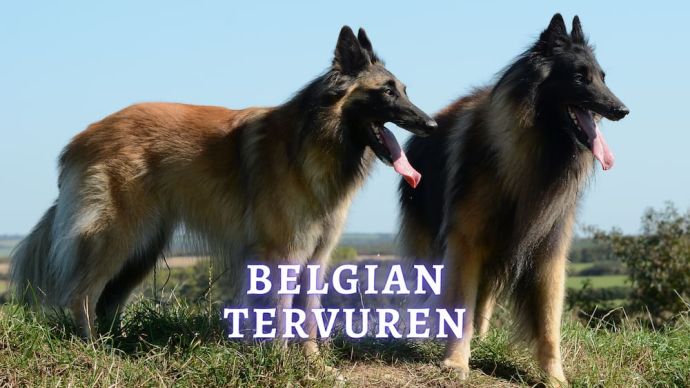 Dog Breeds Belgian Tervuren: Lifespan, Temperament and Trainability of Belgian Tervurens
Dog Breeds Belgian Tervuren: Lifespan, Temperament and Trainability of Belgian Tervurens - 262
- 0
 Dog Veterinary Tips Why is my Dog throwing up: Causes and Preventing (Veterinary Advice)
Dog Veterinary Tips Why is my Dog throwing up: Causes and Preventing (Veterinary Advice) - 23424
- 5
 Dog Care Why Is My Dog Bleeding From Its Butt? Causes and treatment of rectal bleeding in the dog
Dog Care Why Is My Dog Bleeding From Its Butt? Causes and treatment of rectal bleeding in the dog - 22076
- 0
 Dog Care My Dog Keeps Scratching His Mouth: Reasons Why Your Dog Scratching Face
Dog Care My Dog Keeps Scratching His Mouth: Reasons Why Your Dog Scratching Face - 17561
- 1









